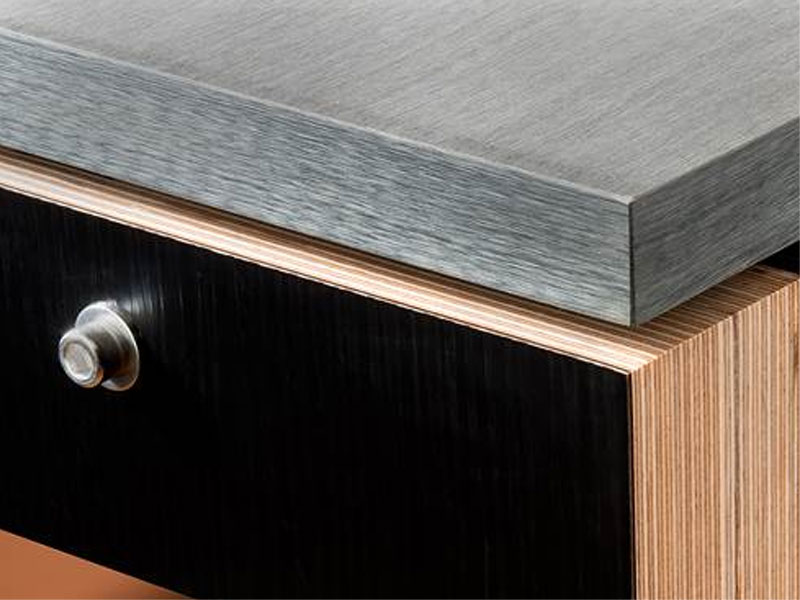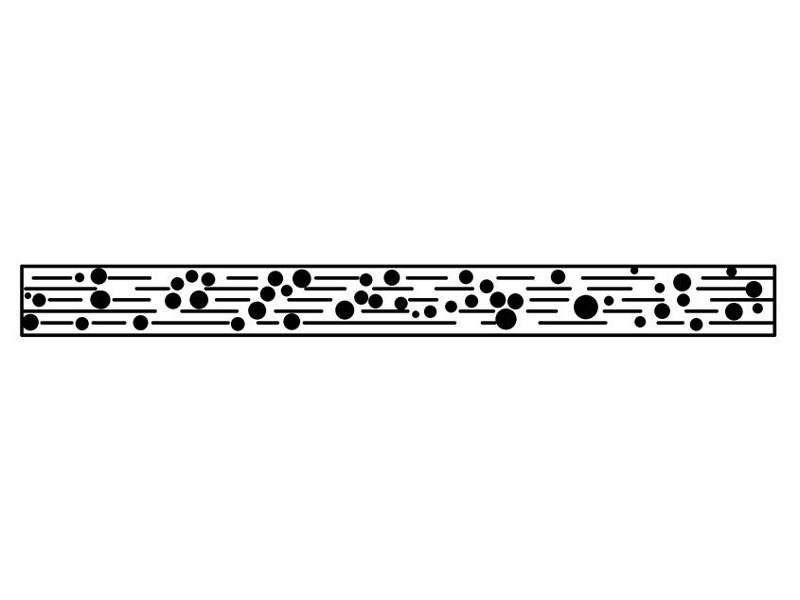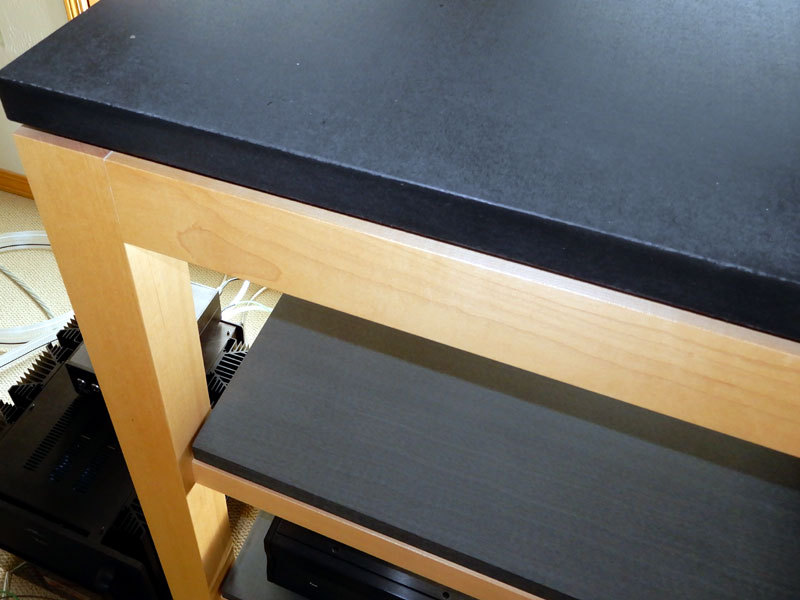First Sounds: Silent Running Audio Craz³
f I were to describe my audio system in the terms of our Solar System, the Silent Running Audio (SRA) Craz² rack would definitely be the sun. It’s the Craz² around which the various preamps, digital players, phono stages, turntables and amplifiers orbit. It supports the vast bulk of my system, and it improves sound in profound ways. If anything, my praise for the Craz² -- a gorgeous, double-wide, solid-as-granite model -- has increased since I reviewed it back in 2010, and the rack has changed little since then. This is surprising, given SRA’s obsessive desire to test and retest its products in order to make them better, but it underscores the maxim that when you do it right the first time, there’s precious little room for improvement.
But “improvement” is exactly what Kevin Tellekamp, head of SRA, announced late last year. While SRA has made various running changes to the Craz², including to the rack’s support system, vibration-damping pods and damping compounds, these were not great enough to require different nomenclature. But new supporting shelves changed that, signaling the introduction of the Craz³ (starting at $12,000). These are the same shelves that Tim Aucremann described in his blog on the latest SRA Scuttle rack: "comprised of soft spherical nanoparticles, all existing in an irregular void matrix, within tiny vacuum pockets." SRA developed this shelving in-house with the aid of Finite Element Analysis, which, Kevin Tellekamp explained, "has been employed by SRA for many, many years, as it helps us to 'see,' measure and project the performance of the finished product before it's completed." SRA provides a graphic along with explanation of the thinking behind the new shelves, which take the name Iso-Shelf, and the material from which they are made.
More from Kevin Tellekamp: "The outside, solid lines (which are really not solid; there are millions of small voids) depict the shelving unit. Within these outside 'solid' lines, there are series of broken varying-length horizontal lines, which represent the structural part of the shelving unit. The spaces in between these lines are fall-offs (or traps, like pot holes in a road) designed to slow things down and funnel vibration, i.e., skin effect (vibrations which travel along surfaces, often growing in complexity and magnitude as they travel, if not dealt with), away from the equipment." If you own an earlier Craz rack, you can upgrade to the new shelves. Contact SRA with the layout of your rack for pricing. Don’t expect immediate response, however. As Kevin Tellekamp let me know, “Every market segment we are involved with are all hitting at the same time. We are going seven days per week and have done so for the past 7-8 months! Not complaining, but the workload leaves little time for much else these days.”
Silent Running Audio's older shelf (top) and new Iso-Shelf. Speaking of workload, I exchanged the shelves of my rack one at a time. I did this for two reasons. First, I wanted to assess the sonic impact carefully, the electronics, both tube and solid state, apart from analog, which always has the greatest potential for change based on what’s underneath the turntable. Second, after the large wooden crate with the four shelves arrived -- all 350 pounds of it -- the enormity of the task occurred to me. I pretty much needed to disassemble my entire audio system in order to swap the shelves on the rack, each of which weighed about 75 pounds. Breaking the toil into small pieces seemed more manageable -- and sane. I started at the bottom, with the digital gear, and moved upward until it was finally time to disassemble my 100-pound TW-Acustic Raven AC turntable and replace its shelf. Because of the height of my particular Craz, I had to stand on a chair to take apart and remove the turntable, piece by piece, and again to put the new shelf in place. I kept the cartridges mounted, so I couldn’t attribute any sonic difference to cartridge alignment. The whole endeavor was rife with hazard. If I have to replace the shelves again, Kevin Tellekamp, who’s a big dude, will have to come to Arizona and help with the perilous work. I commented in my review of the Craz² that those shelves looked, felt and sounded (after a light tap) unusually lively -- bell-like almost. That was the idea: the shelves transferred energy from the components resting on them and down into the rack, where it would be drained off to the floor. The new shelves, which were 1/8" thinner and grainy in appearance, were far more dense and inert, like some kind of advanced composite material that resembled and felt like both stone and wood. I’ve examined and held the various composite materials Wilson Audio uses for its speaker cabinets, but they are not like whatever is used for SRA’s Iso-Shelves. It’s not hard to surmise, after running your hand over them, that these shelves are where resonance goes to die a merciful and righteous death. They almost seem to suck the sound waves right out of the air. The areas in which the new shelves, and indeed the entire Craz rack, enhance sonic performance are focus, dynamics, tonal purity, resolution and, for lack of a better term, composure. In other words, the sound was roundly improved top to bottom, but especially on top, into the midrange, and in the transition between the two, which was more liquid and better integrated into the entire frequency spectrum. There was greater coherency, as though the speakers’ crossover has been fine-tuned and made less obtrusive. The pitch of piano especially seemed more precise, again as though something in the system had been vastly improved. And that was the case, the rack helping to produce better sound and the electronics sounding more like themselves, because resonance was drained off or impeded more effectively. There is a caveat to what I wrote in the last paragraph, and it’s a positive one: it applied to the electronics but not my turntable, which was the last component to find pride of place on the Craz³. Once again, I did this piecemeal swapping of the shelves purposely, but I couldn’t have predicted the level of improvement wrought on analog, and I couldn’t have guessed the areas in which the improvement would be most profound. While it wasn’t measurably the case, the bass really did sound like it extended another octave, and it possessed more power too, along with jackhammer-like speed and definition. This was so startling that I had to check my results against digital, playing CDs and LPs of the same recordings just to be sure of what I was hearing. The recording that was absolutely definitive was Keith Richards’ Main Offender, the LP of which [Virgin VUSLP 59] is a true rarity compared to the common and inexpensive CD [Virgin V2-86499]. ”Words of Wonder” has deep, pounding bass, and the entire cut absolutely pleads to be turned up to 11, which only helps the low end approach the power and presence of live music. With the new shelf underneath, my TW-Acustic Raven AC sounded precise and real in ways it hadn’t achieved previously, the cut having tighter focus from the highest treble on down, but the bass especially sounding raucous in a way that only the real thing betters. This is one the areas in which reproduced music captured on 99.9% of recordings falls far, far short of live music, but not “Words of Wonder” from Main Offender -- and especially not with the Craz³ under the turntable. There was also a firming of instrumental lines -- a tighter kind of focus that increased overall precision from top to bottom. While writing this article, I was listening to a Denon DL-103R cartridge mounted on my turntable. The Denon cartridge is one of high-end audio's best values -- the phono-cartridge equivalent of the Wilson Audio Sabrina speakers: both are products that can cause listeners to wonder if spending more money is really necessary. With an Iso-Shelf underneath my turntable, the '103R sounded less warm and fuzzy, more resolute. It actually sounded like the DL-S1, which was Denon's top-of-the-line moving-coil until it was discontinued. After all of the shelf swapping was done, the Craz³ was all gain and no pain -- a profound sonic upgrade in every
sense. The new Iso-Shelves are black holes for vibration and resonance, and they will help
your audio system shine. |



